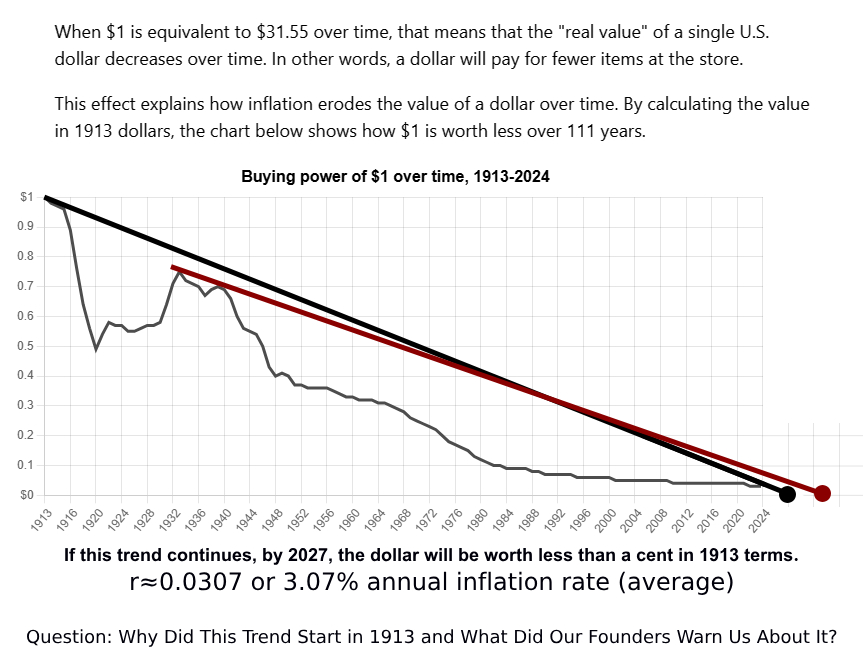Financial Turbulence in a Changing World
The global economy is undergoing seismic shifts. Unfortunately, and from everything that I have seen, it’s going to get worse before it gets better. From inflation eroding purchasing power to changes in the labor market driven by technology, these shifts are proactively reshaping how we work, invest, and save. Recent analyses, such as Philip Pilkington’s insights on the rising prominence of gold, seemingly demonstrate the economic uncertainty ahead. While I am not a financial advisor, I wanted to provide a few practical strategies you can use to make informed decisions and protect your financial well-being as we navigate this period of transition.
Understanding the Current Financial Landscape
To understand the trajectory, we really need to understand three things. Gold is on the rise, the dollar is on the decline, and debt is going through the roof. Individually, these are easy to dismiss. However, together, they paint a very specific picture that we should be paying attention to.
Gold as a Safe Haven: Gold has historically been a refuge during times of uncertainty. In 2024 alone, its price surged by over 28%, outpacing even strong equity market returns. Indeed, anyone willing to examine the facts objectively could have seen this coming. However, many still denied this possibility. Now, analysts predict that gold’s ascent will continue, possibly reaching $10,000 per ounce by the end of the decade.
Central banks are increasingly turning to gold to diversify reserves as well, driven by geopolitical shifts and a decline in reliance on the US dollar. These are important clues. As this trend unfolds, gold may play a pivotal role in reshaping global trade settlements. If so, we must consider what this truly means.
The Declining Dollar: Unfortunately, the US dollar’s dominance as the world’s reserve currency is waning. Countries are exploring alternatives due to geopolitical tensions and concerns about asset seizures (e.g., BRICS). Meanwhile, the growing reliance on selling tech stocks to finance trade deficits exposes extreme vulnerabilities. If these stocks crash, the dollar’s role in international markets could diminish further, creating ripple effects across the economy.
Debt and Interest Rates: I don’t have to tell you this, but the US national debt has reached unprecedented levels, with interest payments becoming a significant burden. Unfortunately, some policymakers try to make you feel as though it’s not a big deal and that they have everything under control. My advice is not to buy it. I wouldn’t buy that line if they gave me the money to buy it with.
Remember that the dollar has lost the vast majority of its value. In many ways, it’s dying. And while many analysts and experts will try to tell you that the dollar will not collapse, even they would have to admit that there just isn’t much value left in it. With inflationary measures continuing to chip away at what’s left, we must accept the idea that you can only erode 100% by so much. Add in the idea of a global dollar dump or increased “de-dollarization,” and you get a pretty grim picture.
Unless someone figures out a solution, the big squeeze is right around the corner. This scenario increases the likelihood of tighter fiscal policies, such as higher taxes or reduced government spending. For individuals, these changes could translate to slower economic growth, reduced job opportunities, and more expensive borrowing. If it goes where I think it could, things will get worse than the Great Depression.

Practical Financial Tips for Turbulent Times
1. Diversify Your Investments
- Explore Precious Metals: Consider allocating a portion of your portfolio to gold or other precious metals. They can act as a hedge against currency devaluation and inflation.
- Broaden Asset Classes: Invest in a mix of stocks, bonds, real estate, and commodities to reduce risk.
- Look at Geopolitical Trends: Consider exposure to international markets that are less tied to the US dollar.
2. Prepare for Inflation
- Budget for Rising Costs: Focus on essentials and cut back on discretionary spending.
- Invest in Tangible Assets: Assets like real estate or commodities often hold value during inflationary periods.
- Seek Inflation-Protected Securities: Instruments like Treasury Inflation-Protected Securities (TIPS) can provide some protection.
3. Adapt to Labor Market Changes
- Upgrade Skills: Stay competitive by learning in-demand skills, particularly in technology, data analysis, or trades.
- Embrace Flexibility: Gig work and remote opportunities can provide additional income streams.
- Focus on Resilience: Build a financial buffer to weather potential job disruptions.
4. Hedge Against Currency Risk
- Consider Cryptocurrencies: While speculative, some cryptocurrencies may offer a hedge against fiat currency instability.
- Hold Foreign Currencies: Diversify savings into stable foreign currencies to mitigate potential dollar devaluation.
5. Reduce Personal / Bad Debt
- Prioritize High-Interest Debt: Pay off credit cards and loans to avoid escalating costs.
- Refinance if Possible: Lock in lower interest rates before potential rate hikes.
6. Build an Emergency Fund
- Save for the Unexpected: Aim for three to six months’ worth of expenses in a liquid, easily accessible account.
- Protect Against Uncertainty: This fund can shield you from financial disruptions and market volatility.
Preparing for the Future Economy
The potential detachment of currency from labor—through concepts like universal basic income—and advancements in automation signal a fundamental transformation in the global economy. Concepts like the CBDC should be seen as a warning. While the specifics are uncertain, staying informed and adaptable will be key to thriving in this new era. By diversifying investments, preparing for inflation, and embracing flexibility, you can safeguard your financial health and position yourself for long-term success.
Closing Thoughts
The shifts we are witnessing today are not just passing trends but indicators of a broader economic realignment. If you have followed my work, you’ve heard me speak of the “Economic Upheaval.” We are watching it unfold. Understanding these changes and taking proactive steps can empower you to make sound financial decisions in the face of uncertainty. Remember, while the future may seem turbulent, it also holds opportunities for those who are prepared to adapt.




